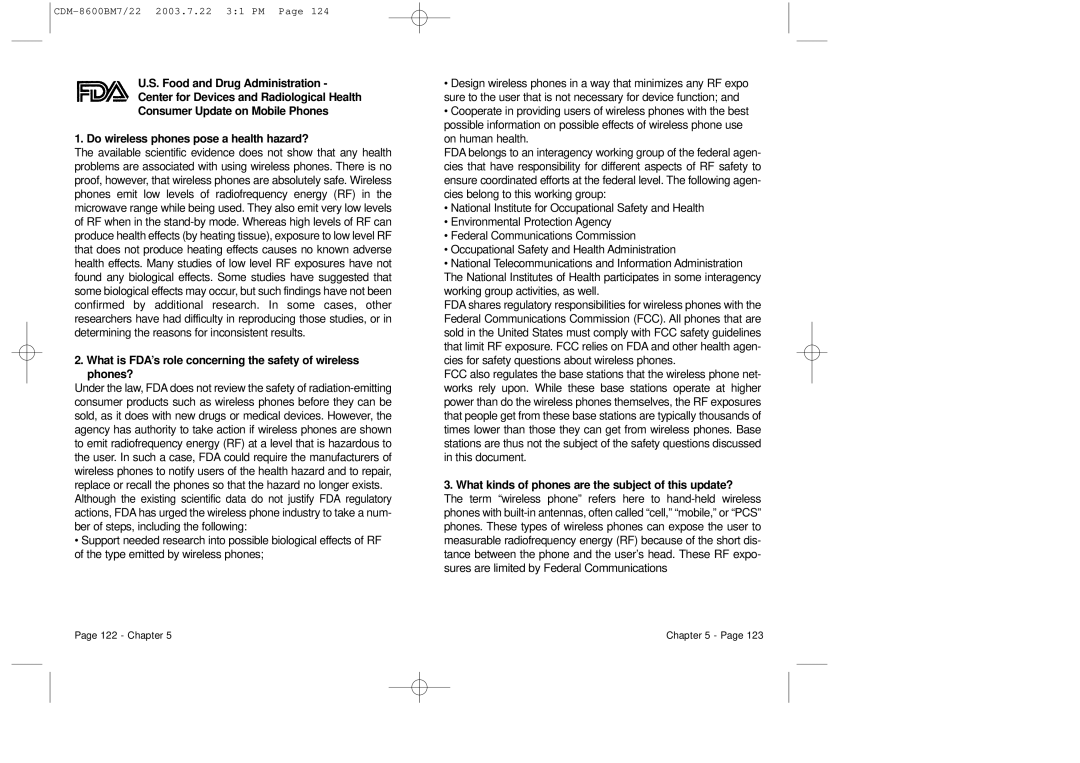
U.S. Food and Drug Administration -
Center for Devices and Radiological Health
Consumer Update on Mobile Phones
1. Do wireless phones pose a health hazard?
The available scientific evidence does not show that any health problems are associated with using wireless phones. There is no proof, however, that wireless phones are absolutely safe. Wireless phones emit low levels of radiofrequency energy (RF) in the microwave range while being used. They also emit very low levels of RF when in the
2. What is FDA’s role concerning the safety of wireless phones?
Under the law, FDA does not review the safety of
Although the existing scientific data do not justify FDA regulatory actions, FDA has urged the wireless phone industry to take a num- ber of steps, including the following:
•Support needed research into possible biological effects of RF of the type emitted by wireless phones;
•Design wireless phones in a way that minimizes any RF expo sure to the user that is not necessary for device function; and
•Cooperate in providing users of wireless phones with the best possible information on possible effects of wireless phone use on human health.
FDA belongs to an interagency working group of the federal agen- cies that have responsibility for different aspects of RF safety to ensure coordinated efforts at the federal level. The following agen- cies belong to this working group:
•National Institute for Occupational Safety and Health
•Environmental Protection Agency
•Federal Communications Commission
•Occupational Safety and Health Administration
•National Telecommunications and Information Administration The National Institutes of Health participates in some interagency working group activities, as well.
FDA shares regulatory responsibilities for wireless phones with the Federal Communications Commission (FCC). All phones that are sold in the United States must comply with FCC safety guidelines that limit RF exposure. FCC relies on FDA and other health agen- cies for safety questions about wireless phones.
FCC also regulates the base stations that the wireless phone net- works rely upon. While these base stations operate at higher power than do the wireless phones themselves, the RF exposures that people get from these base stations are typically thousands of times lower than those they can get from wireless phones. Base stations are thus not the subject of the safety questions discussed in this document.
3. What kinds of phones are the subject of this update?
The term “wireless phone” refers here to
Page 122 - Chapter 5 | Chapter 5 - Page 123 |
